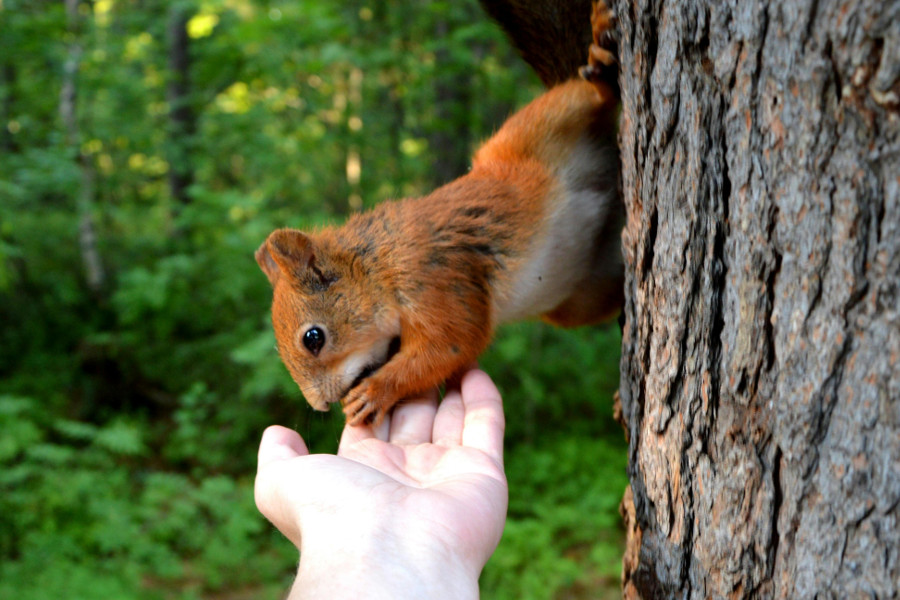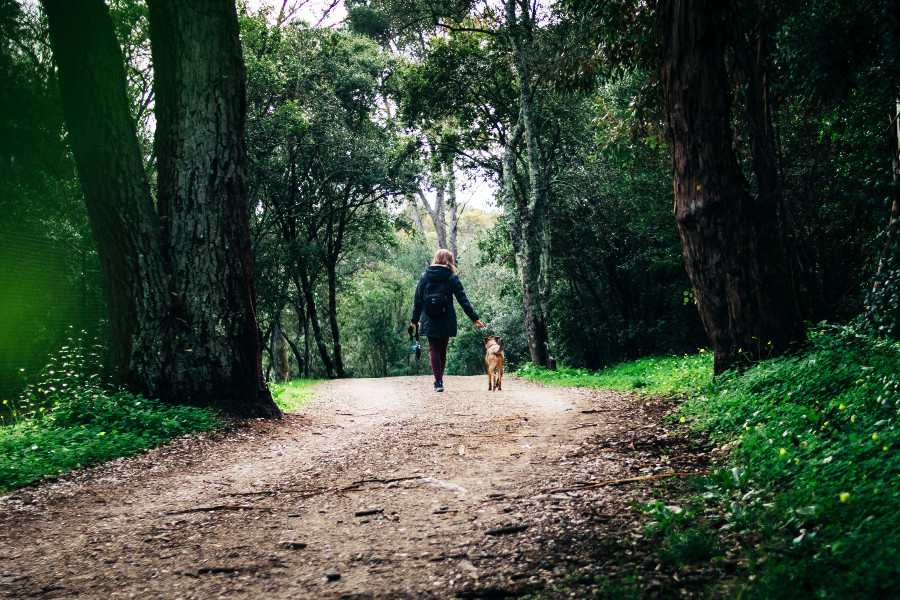The Healing Power of Forest Therapy: Nature’s Prescription for Well-being
In today’s fast-paced world, where stress and anxiety often dominate, the idea of turning to nature for healing has gained substantial traction. Forest therapy, or Shinrin-yoku, is a practice rooted in the idea that spending time in forests and natural environments can have profound benefits on our physical and mental health. From reducing stress to enhancing creativity, forest therapy offers a therapeutic way to reconnect with the natural world. But what exactly is it, and why is it becoming so popular?

What is Forest Therapy?
Forest therapy isn’t a trend, and it’s definitely not a gimmick. It’s as old as the earth itself. At its heart, it’s about stepping into the natural world, turning off your phone, and allowing yourself to truly experience the forest with all of your senses. And when you do that, something magical happens.
This practice started in Japan in the 1980s, but it’s now spreading like wildfire around the world. It’s not about hiking, or even exercising - it’s about being. Being present. Being aware. Allowing nature to heal you from the inside out. When you step into a forest, the air is different, the sounds are different, the whole atmosphere is different. Trees, plants, and even the soil have been shown to release compounds that can lower your stress hormones, boost your immune system, and clear your mind.
It’s not a therapy you book with a doctor or a clinic. It’s an experience you give yourself. All it takes is stepping into a quiet, green space and allowing yourself to slow down, breathe deeply, and engage with the environment. And the results? Well, the results are nothing short of life-changing.
The Benefits of Forest Therapy
Let’s face it: life can feel overwhelming. Between the pressures at work, the noise of social media, and the constant expectations from society, it’s easy to forget how to simply be. And that’s where forest therapy comes in. When you enter a forest, the pace slows down. You’re not rushing anywhere. You’re not checking your phone every five minutes. You’re simply existing. And in that stillness, your body and mind start to heal.
1. Physical Benefits
Your body begins to unwind. That tightness in your chest starts to ease. Your blood pressure drops. You can literally feel the weight of your stress lifting. Studies show that spending time in nature can lower your cortisol levels, the hormone responsible for stress. It’s like the forest itself wraps its arms around you and says, "Relax. You’re safe here."
2.Mental and Emotional Benefits
The effects on the mind are just as powerful. Anxiety fades. Racing thoughts slow down. In nature, you can breathe deeply and find space to just be without the constant barrage of to-dos and worries. Forest therapy is like pressing the reset button for your mind, helping you restore your emotional balance.
3. Creative and Cognitive Benefits
It doesn’t stop there. Ever feel stuck? Like you’re out of ideas or can’t get a clear thought to form? Time in nature is shown to improve cognitive functions, boost focus, and spark creativity. It’s almost like the forest helps you think better, clearer, and more freely. You might leave the forest with not just a calm mind, but with fresh insights and ideas you didn’t have before.
4. Spiritual Connection
And then there’s the spiritual side. It’s not something you can touch or quantify, but it’s there. The connection you feel to the earth, to something bigger than yourself. There’s a kind of peace in nature that you can’t find in a crowded city or on a busy street. It’s like the forest gives you permission to be still, to listen, to reflect. And when you do that, you might just discover a deeper sense of peace within yourself.

How Forest Therapy Works in Practice
Forest therapy isn’t about rushing. It’s not a checklist of things to do, it’s a mindset. Here’s how to get started.
Step 1: Find Your Forest
You don’t need to go on a long hike or find the most remote wilderness. Any forest or natural area will do. It could be a park, a nature reserve, or even a green space near your home. The key is to find a quiet spot where you can truly disconnect from the noise of the world.
Step 2: Slow Down and Engage Your Senses
This isn’t a race. This isn’t about getting somewhere. It’s about slowing down and taking it all in. Listen to the sound of the wind in the trees. Feel the texture of the bark on the tree trunks. Breathe in the fresh, earthy air. Look closely at the leaves and the ground. The idea is to be with the forest, not rush through it.
Step 3: Reflect and Let Go
Once you’ve immersed yourself in the forest, take a moment to reflect. What do you feel? What thoughts or emotions come up? Don’t rush through this part. The real healing comes when you allow yourself to sit in silence, to reflect, to just be. If you want, you can write down your thoughts in a journal or simply sit and enjoy the peace.
Step 4: Make it a Regular Practice
The beauty of forest therapy is that it doesn’t have to be a one-off thing. In fact, the more you practice, the more you’ll see the benefits. It’s not about being perfect; it’s about creating a regular habit of slowing down and reconnecting with the earth.
To learn more about the different species in a forest take a book with you that lists inhabitants in natural spaces or use an app like iNaturalist to identify species.

Forest Therapy Around the World
Forest therapy isn’t just a Japanese tradition anymore. It's taken root across the globe, spreading like wildfire from the dense forests of Japan to the green landscapes of North America and Europe. In fact, it’s gaining so much traction that entire programs are now dedicated to the practice, with certified guides leading the way in national parks and natural reserves.
Take the UK, for example. There, the Forest Bathing Institute runs guided sessions, helping people tap into the healing power of nature in tranquil forest settings. Over in North America, the Association of Nature and Forest Therapy trains and certifies guides who then lead people through immersive forest experiences. It’s spreading, and it's changing lives.
What’s fascinating is that no matter where you go - whether it’s the deep woods of the Pacific Northwest or the serene forests of Europe - the essence of forest therapy remains unchanged. It’s a simple, yet profound practice: stepping away from the hustle and bustle of modern life and reconnecting with nature to heal the body, mind, and spirit.
Scientific Research and Evidence
Let’s face it - there’s a lot of buzz around the idea of "nature healing." And while some of us might have been skeptical at first, the growing body of scientific research is starting to catch up with what people have known intuitively for centuries. Studies are beginning to show that spending time in forests can bring real, measurable benefits.
For instance, a study in the Journal of Environmental Psychology found that people who spent time in nature had lower cortisol levels, which means less stress. Their immune systems were stronger, and their moods were significantly improved compared to those in more urban settings. These aren’t just small findings; they’re scientifically-backed indicators that forest therapy works.
But the research doesn’t stop there. It turns out forest therapy can even enhance cognitive abilities. A number of studies have shown that after spending time in nature, people experience better focus and clearer thinking. Imagine what just a short walk in the woods can do for your productivity. Of course, as with any emerging field, some researchers caution that more comprehensive studies are needed to fully understand the long-term effects. But the results so far? Well, they speak for themselves.
Useful links to official associations:
- Forest Bathing and Forest Therapy Training Hub
- Association of Nature and Forest Therapy (ANFT)
- Forest Therapy Society (Japan)
Conclusion
The modern world moves fast. We’re bombarded with information, distractions, and the constant pressure to perform. It’s exhausting. But there’s an antidote. A simple, peaceful solution that has been with us for thousands of years: nature. Forest therapy invites us to step off the treadmill, slow down, and reconnect with something real.
So, if you’re feeling burnt out, overwhelmed, or just stuck in the chaos of modern life, forest therapy might be exactly what you need. It’s not about “fixing” you. It’s about helping you return to yourself, to your roots, to the peace that lies just beyond the noise.
Take a walk in the forest. Let nature work its magic. You might just find that the answers you’ve been looking for were always there, hidden in the leaves and the trees, waiting for you to listen.



